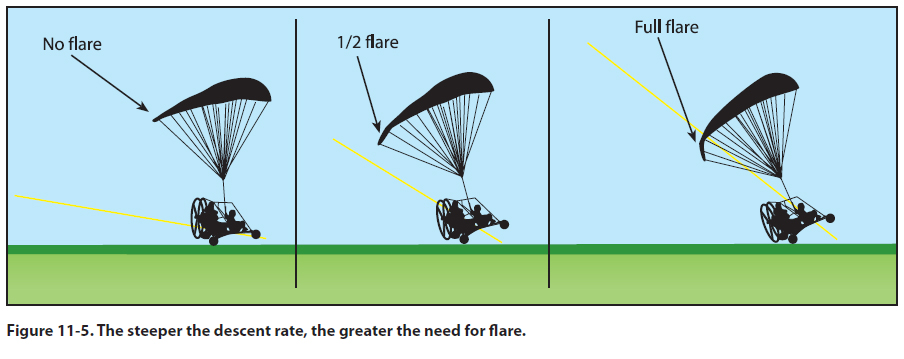|
Chapter 11 — Approaches and Landings
Wing Control
The measured input of the flare is directly related to
the leg extension of the pilot. For one-third flare, simultaneously
push the steering controls out approximately
one-third of your leg length. During a full-flare,
you would be fully extending your legs to apply input
to the steering controls; one-half flare, you would be
pushing the controls out half of your full leg extension,
and so on. [Figure 11-4]

For landings, the amount of flare needed is directly
related to the descent rate. The steeper and faster the
descent, the more flare input is required for a smooth
landing. [Figure 11-5] Keep in mind the flare is converting
forward momentum into lift. So, if the pilot is
landing with a very slow descent rate, then the pilot
would only need to apply one-third flare during the
landing. Use full-flare during an engine-out descent,
which is the steepest descent of a PPC, for landing.

A flare should be applied in a single 1-2-3 motion.
Apply the flare smoothly, in a rhythmic, even, “1-2-
3” motion.
|

